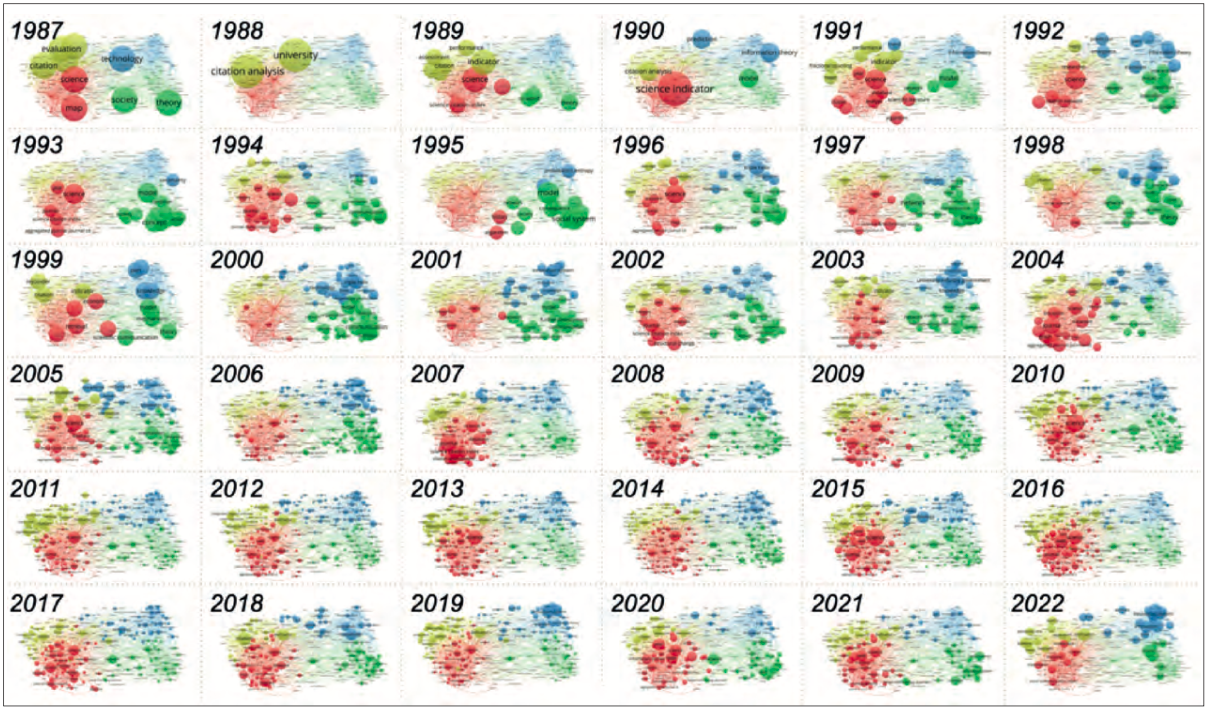Happy New Year! At EC3 Research Group we start the year by catching up on the latest publications from dear team members Wenceslao Arroyo-Machado and Zaida Chinchilla-Rodríguez. They both closed 2023 by participating in the «Tribute to Loet Leydesdorff», a special issue published by Profesional de la Información Journal. And a few days later, Wences opened 2024 in the monographic edition «Visibilización de la ciencia en las redes sociales: retos y oportunidades» of Revista Mediterránea de Comunicación, alongside colleagues from different fields and institutions. Enjoy the readings! And have a wonderful start.
Anunciamos el cierre de "Tribute to Loet Leydesdorff" el Vol. 32 Núm. 7 de #RevistaEPI. Como siempre agradeciendo a todos, quienes con su aporte, lo han hecho posible.
— Revista EPI (@revista_EPI) December 31, 2023
▶️ https://t.co/WSTa8zRkfl pic.twitter.com/zhHMVSR0oT
«Science overlay maps: A tribute to Loet Leydesdorff», by Benjamín Vargas-Quesada, Wenceslao Arroyo-Machado, Teresa Muñoz-Écija and Zaida Chinchilla-Rodríguez.
This is a homage to Loet Leydesdorff, teacher and scientific reference. Through the combination of overlay maps, a visualization technique proposed by himself and Ismael Ràfols, in combination with the CAMEOs (Characterizations Automatically Made and Edited Online) proposed by Howard White, we project his scientific trajectory in five different scenarios, which turn out to be complementary. For each of the scenarios or CAMEOs, we show how he acts and interacts from the point of view of scientific research, providing the reader with online access to an interactive VOSviewer tool, so that he can check the information presented here, and even go deeper into the analysis, in fact, we encourage him to do so. To sum up, we can say that Loet was quite a character, a lone wolf who enjoyed working with the best of the best of his main research topics: scientific communication, innovation systems, bibliometrics, and science mapping; becoming in turn the referent of these lines of research.
«Use of social networks by high-impact journals in Communication and Information Sciences», by Jesús Cascón-Katchadourian, Wileidys Artigas, Wenceslao Arroyo-Machado and Javier Guallar.
This research sought to examine the adoption of social networks by the Communication and Library and Information Sciences (LIS) scientific journals with the greatest impact (Q1) according to the Scimago Journal Rank (SJR). A descriptive methodology was followed with a quantitative approach through a review of the websites and social networks of the journals. The profiles and their activity on platforms such as Twitter, Facebook, Instagram, LinkedIn and YouTube were identified, their activity was analysed according to types of publishers in relation to their size and the results between the two areas were compared, revealing their similarities and differences. Among the main contributions, there is evidence of a different behaviour between the two categories studied, with a greater adoption of social media in the Communication area, a clear predominance of the X platform in all cases, and a greater presence in networks of small journals and independent publishers than from major publishers. Among the limitations of this research, we can point to the absence of a content analysis of the publications; this is proposed for future studies.
📢We start the year with a new publication.
— CUVICOM | Research project 📑 (@cuvicom) January 2, 2024
Use of social networks by high-impact journals in Communication and Information Sciences by @jcasconkat, @wileart, @Wences91 and@jguallar
🔗Available on @RMComu: https://t.co/4fqvRUktNt pic.twitter.com/c6DZoYFDAZ
